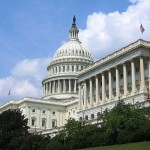The  new 2013 fiscal year begins on October 1, 2012; however, because Congress was unable to pass any annual appropriations bill to fund discretionary spending, a six-month continuing resolution (CR) has been approved. Already passed by Congress, the CR will maintain 2012 spending levels, plus provide a 0.612% across-the-board increase to most discretionary funding. This will raise the Department of Energy’s $26.3 billion discretionary budget to about $26.5 billion.
new 2013 fiscal year begins on October 1, 2012; however, because Congress was unable to pass any annual appropriations bill to fund discretionary spending, a six-month continuing resolution (CR) has been approved. Already passed by Congress, the CR will maintain 2012 spending levels, plus provide a 0.612% across-the-board increase to most discretionary funding. This will raise the Department of Energy’s $26.3 billion discretionary budget to about $26.5 billion.
In passing a CR, Congress is allocating funding for the DoE the same way it did under The Energy and Water Development Appropriations Act for FY2012. Doing so rejects departmental requests, limiting the department’s ability to cut wasteful programs or expand successful ones. The six-month CR defers budget decisions for DoE until next year, barring any last-minute action during a lame duck session after the election.
The resolution fails to address the bigger issue: sequestration. Back in summer of 2011, Congress, gridlocked in its ability to raise the debt ceiling, passed the Budget Control Act of 2011. The act set government spending limits for the fiscal years 2012 through 2021.However, should a Congressional ‘supercommittee’, established by the act, fail to find $1.5 trillion savings in federal spending or tax increases the act also included a clause (sequestration) that would automatically cut spending by $1.2 trillion over the 10 year period.
While sequestration was intended to be merely a scare tactic to force Congress to compromise, the threat is becoming more real as the January 2013 sequester date approaches. This will occur unless a lame duck Congress comes to a resolution on government taxing and spending, or the mechanism is nullified by the president or in legislation. While sequestration will probably not occur it’s important to look at the possible effects of the measure.
Last month Congress passed a law requiring the Office of Management and Budget to produce a report in 30 days showing the effects of sequestration. This was largely pushed by defense hawks who wanted definitive answers as to which specific programs would be cut. The numbers would hopefully scare Congress and the President into stopping sequestration.
Last Friday the 394 page report was released, but much to these members’ chagrin, it does not say how individual programs would be cut. This prevents the individual programs from being politicized and keeps the threat of sequestration a mystery. Despite this, it does provide insight into how the DoE would be affected, showing that non-defense DoE appropriations will be cut by 8.2% across the board, while defense appropriations will be cut by 9.4% .
The offices affected by the higher 9.4% cut rate would be the National Nuclear Security Administration as well as the DoE’s ‘Environmental and Other Defense Related Activities’ which mainly covers Environmental clean-up and health, safety, and security functions for defense sites.
The rest of the DoE would see cuts that mimic the 8.2% cut of most other non-defense departments. These cuts will be devastating in their disregard for program quality, especially as the department seeks to advance our nation’s energy security. Some examples of these cuts include:
- $400 million cut from scientific research done to advance our understanding of the climate as well as future energy sources
- $148 million cut from investment in renewable energy technologies
- $44 million cut from efforts to make fossil fuels cleaner and more efficient
- $19 million cut from environmental clean-up
Our nation’s budget does need to be brought under control, however sequestration is a broad measure that fails to distinguish between programs that can manage cuts, those that need cuts, and those where cuts will gut the program’s effectiveness.


